The little server that could
1. Introduction
It's true.. !
I had given my word I wouldn't do it again.
I promised I would never build a server from scratch again and that I would keep buying brands (customizable ones, of course).
.. but then I realized that my T410 didn't fit in the strict quietness of a living room and I needed to look for a new Firewall/router for our future appartment.
(to be fair, the T410 - with a single 1200rpm 12cm Noctua fan and low-power cpus, drives and RAM - is close to be completely silent).
I set out to look for something with the following requirements:
- Small case with a good design to reduce the noise.
- Xeon cpu and ECC RAM.
- At least 16gb ECC RAM.
Two servers seemed to be fit the requirements:
1) The HP miniserver Gen8
2) The Dell T30 PowerEdge.
I liked the look of the HP machine but I liked the features of the T30 even more. Still, the T30 was supposedly 'silent' but its case was big and I didn't want to have another T410 in my living room.
The solution was to attempt to build my own little server based on a media-server type of case.
Since I had decided that the server would be in a fanless case, I had to pick low-power components: Low power Xeon cpu (45W), Low power DIMMs, Low power SDD and Hard Disk.
2. Components Breakdown
Here are the components I used:
3. It's still a server and its OOB shows
A note about the OOB Management of that server. This isn't an iDrac or an iLO but it comes pretty close. The following screens show what you actually get with the motherboard I used:
4. Some more settings to make IPMI usable on RHEL6.x
Voila, you don't need to do much for the console itself on RHEL6 (no need for /etc/init/ttyS1.conf), just add the serial port to your grub config:
# cat /boot/grub/grub.conf
default=0
timeout=15
serial --unit=1 --speed=115200 --word=8 --parity=n --stop=1
terminal --timeout=15 serial console
title Red Hat Enterprise Linux Server (2.6.32-504.12.2.el6.x86_64)
root (hd0,0)
kernel /vmlinuz-2.6.32-504.12.2.el6.x86_64 ro root=/dev/rootdg/lv_root rd_LVM_LV=rootdg/lv_swap rd_NO_LUKS LANG=C KEYBOARDTYPE=pc KEYTABLE=us-acentos rd_LVM_LV=rootdg/lv_root rd_NO_MD rd_NO_DM SYSFONT=latarcyrheb-sun16 console=tty0 console=ttyS1,115200n8 crashkernel=auto intel_iommu=on swiotlb=65536 pcie_aspm=off rhash_entries=1024 elevator=deadline rdloaddriver=megaraid_sas rdblacklist=nouveau nouveau.modeset=0 biosdevname=0
initrd /initramfs-2.6.32-504.12.2.el6.x86_64.img
Next, a change is needed for the IPMI sol baudrates (without it the sol console would only display binary garbarge):
[user@server1 ~]$ ipmitool -I lanplus -U root -H asrock-rsc shell
Password:
ipmitool> sol info
Set in progress : set-complete
Enabled : true
Force Encryption : false
Force Authentication : false
Privilege Level : USER
Character Accumulate Level (ms) : 60
Character Send Threshold : 96
Retry Count : 7
Retry Interval (ms) : 500
Volatile Bit Rate (kbps) : 9.6
Non-Volatile Bit Rate (kbps) : 9.6
Payload Channel : 1 (0x01)
Payload Port : 623
ipmitool> sol set non-volatile-bit-rate 115.2
ipmitool> sol set volatile-bit-rate 115.2
ipmitool> sol info
Set in progress : set-complete
Enabled : true
Force Encryption : false
Force Authentication : false
Privilege Level : USER
Character Accumulate Level (ms) : 60
Character Send Threshold : 96
Retry Count : 7
Retry Interval (ms) : 500
Volatile Bit Rate (kbps) : 115.2
Non-Volatile Bit Rate (kbps) : 115.2
Payload Channel : 1 (0x01)
Payload Port : 623
ipmitool> exit
Here's the SOL console in action:
[user@server1 ~]$ ipmitool -I lanplus -U root -H asrock-rsc sol activate
Password:
[SOL Session operational. Use ~? for help]
Red Hat Enterprise Linux Server release 6.6 (Santiago)
Kernel 2.6.32-504.12.2.el6.x86_64 on an x86_64
asrock login:
Since the server is fanless and at room temperature, it runs a little hotter than other machines but it's still acceptable:
[user@asrock ~]$ sudo ipmitool sdr list|grep Temp
M/B Temperature | 47 degrees C | ok
CPU Temperature | 44 degrees C | ok
[user@asrock ~]$ sensors
coretemp-isa-0000
Adapter: ISA adapter
Physical id 0: +45.0°C (high = +84.0°C, crit = +90.0°C)
Core 0: +44.0°C (high = +84.0°C, crit = +90.0°C)
Core 1: +43.0°C (high = +84.0°C, crit = +90.0°C)
Core 2: +43.0°C (high = +84.0°C, crit = +90.0°C)
Core 3: +41.0°C (high = +84.0°C, crit = +90.0°C)
[user@asrock ~]$ sudo hddtemp /dev/sdb
/dev/sdb: WDC WD40EFRX-68WT0N0: 46°C
It's true.. !
I had given my word I wouldn't do it again.
I promised I would never build a server from scratch again and that I would keep buying brands (customizable ones, of course).
.. but then I realized that my T410 didn't fit in the strict quietness of a living room and I needed to look for a new Firewall/router for our future appartment.
(to be fair, the T410 - with a single 1200rpm 12cm Noctua fan and low-power cpus, drives and RAM - is close to be completely silent).
I set out to look for something with the following requirements:
- Small case with a good design to reduce the noise.
- Xeon cpu and ECC RAM.
- At least 16gb ECC RAM.
Two servers seemed to be fit the requirements:
1) The HP miniserver Gen8
2) The Dell T30 PowerEdge.
I liked the look of the HP machine but I liked the features of the T30 even more. Still, the T30 was supposedly 'silent' but its case was big and I didn't want to have another T410 in my living room.
The solution was to attempt to build my own little server based on a media-server type of case.
Since I had decided that the server would be in a fanless case, I had to pick low-power components: Low power Xeon cpu (45W), Low power DIMMs, Low power SDD and Hard Disk.
2. Components Breakdown
Here are the components I used:
- 1 of: Streacom ST-SSATA Slimline SATA Cable
- 1 of: Streacom ST-OB3 Slot-Load Blu-ray Drive for Streacom Chassis
- 1 of: Streacom SC30 Internal USB3.0 Cable for Streacom Chassis
- 1 of: Streacom FC8 EVO Fanless Home Theater Aluminum Chassis (Black)
- 1 of: Streacom 150W nanoPSU and AC/DC adapter block
- 2 of 8gb Samsung M391B1G73QH0-YK0 ECC UDIMM @ 1600Mh
- 1 of AsRock Rack E3C226D2I mini-ITX Server MotherBoard
- 1 of Intel(R) Xeon(R) CPU E3-1275L v3 @ 2.70GHz (45W)
- 1 of Samsung EVO 850 1Tb SSD (MZ-75E1T0B/AM) : Boot Drive
- 1 of WD WD40EFRX Western Digital Red 4Tb : Data Drive
A note about the OOB Management of that server. This isn't an iDrac or an iLO but it comes pretty close. The following screens show what you actually get with the motherboard I used:
 |
| You log onto the OOB (Megarac SP) by using a web browser. |
 |
| The default page gives a good overview of your server's health. |
 |
| Going to Remote Control gives you an option for 'Remote Console' that loads a Webstart Java Applet (here with Seamonkey and Java 8) |
 |
| Once properly configured you fully control the server from the Java applet. Here the server's booting and giving the usual banner. |
 |
| The BIOS is full of configurable features and the SoftKeyboard helps for special key combinations. |
 |
| Console redirection is quite staightforward. You'll get IPMI and Video console redirection. |
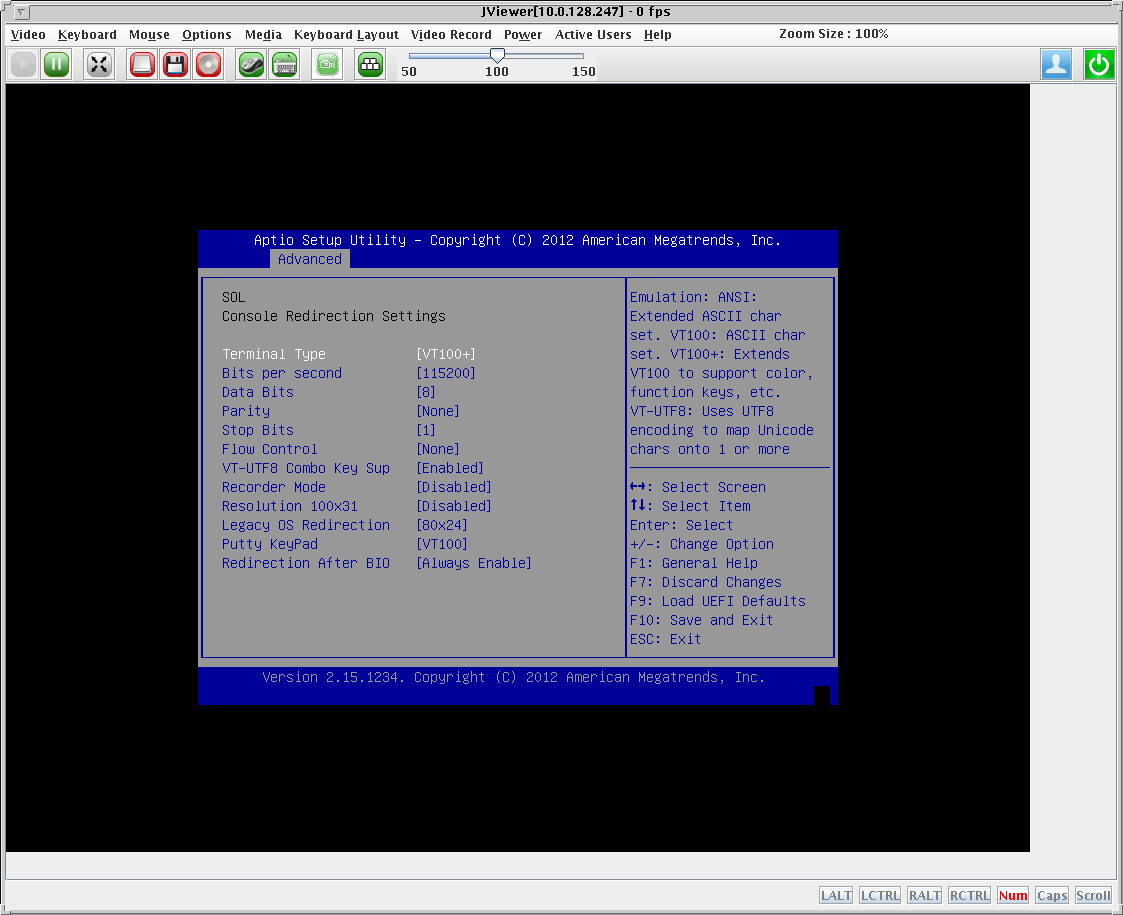 |
| More redirection settings. |
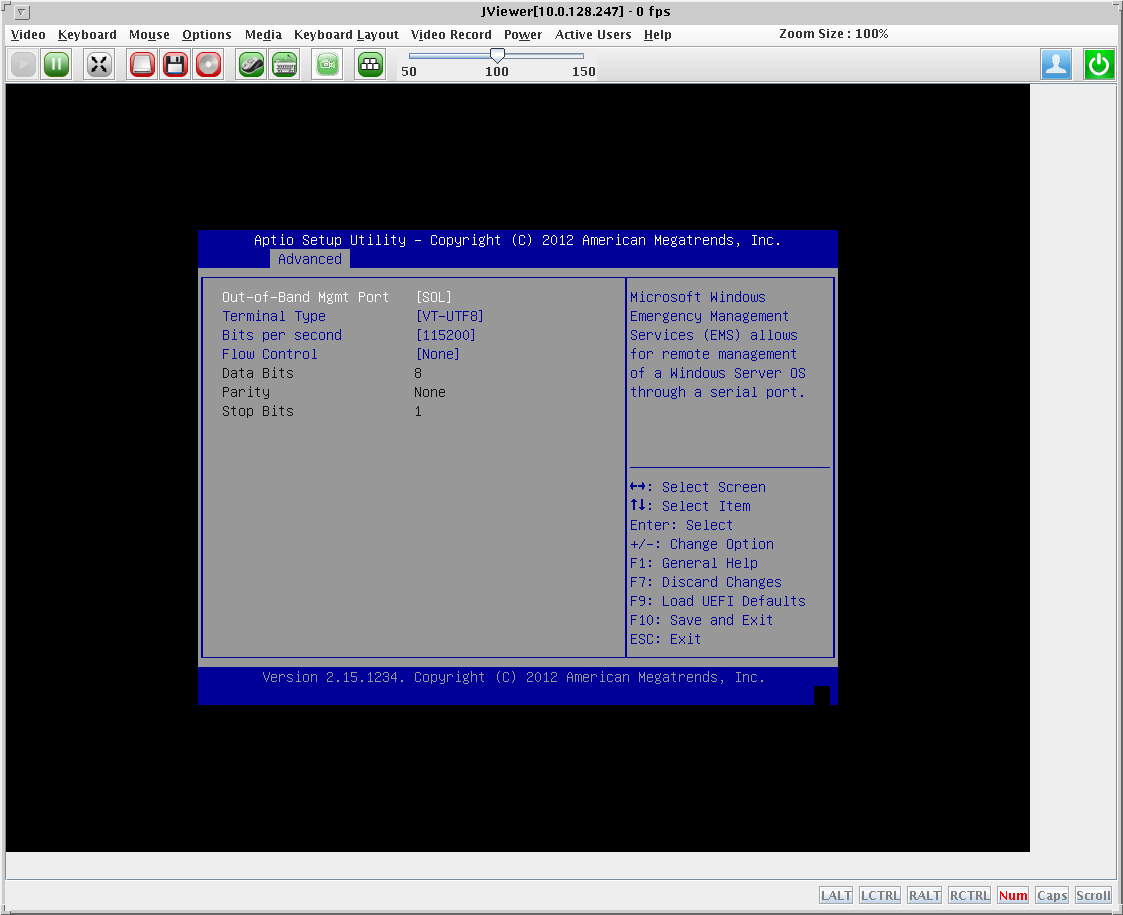 |
| Serial-Over-LAN IPMI settings. |
 |
| RHEL 6.6 grub menu. |
4. Some more settings to make IPMI usable on RHEL6.x
# cat /boot/grub/grub.conf
default=0
timeout=15
serial --unit=1 --speed=115200 --word=8 --parity=n --stop=1
terminal --timeout=15 serial console
title Red Hat Enterprise Linux Server (2.6.32-504.12.2.el6.x86_64)
root (hd0,0)
kernel /vmlinuz-2.6.32-504.12.2.el6.x86_64 ro root=/dev/rootdg/lv_root rd_LVM_LV=rootdg/lv_swap rd_NO_LUKS LANG=C KEYBOARDTYPE=pc KEYTABLE=us-acentos rd_LVM_LV=rootdg/lv_root rd_NO_MD rd_NO_DM SYSFONT=latarcyrheb-sun16 console=tty0 console=ttyS1,115200n8 crashkernel=auto intel_iommu=on swiotlb=65536 pcie_aspm=off rhash_entries=1024 elevator=deadline rdloaddriver=megaraid_sas rdblacklist=nouveau nouveau.modeset=0 biosdevname=0
initrd /initramfs-2.6.32-504.12.2.el6.x86_64.img
Next, a change is needed for the IPMI sol baudrates (without it the sol console would only display binary garbarge):
[user@server1 ~]$ ipmitool -I lanplus -U root -H asrock-rsc shell
Password:
ipmitool> sol info
Set in progress : set-complete
Enabled : true
Force Encryption : false
Force Authentication : false
Privilege Level : USER
Character Accumulate Level (ms) : 60
Character Send Threshold : 96
Retry Count : 7
Retry Interval (ms) : 500
Volatile Bit Rate (kbps) : 9.6
Non-Volatile Bit Rate (kbps) : 9.6
Payload Channel : 1 (0x01)
Payload Port : 623
ipmitool> sol set non-volatile-bit-rate 115.2
ipmitool> sol set volatile-bit-rate 115.2
ipmitool> sol info
Set in progress : set-complete
Enabled : true
Force Encryption : false
Force Authentication : false
Privilege Level : USER
Character Accumulate Level (ms) : 60
Character Send Threshold : 96
Retry Count : 7
Retry Interval (ms) : 500
Volatile Bit Rate (kbps) : 115.2
Non-Volatile Bit Rate (kbps) : 115.2
Payload Channel : 1 (0x01)
Payload Port : 623
ipmitool> exit
Here's the SOL console in action:
[user@server1 ~]$ ipmitool -I lanplus -U root -H asrock-rsc sol activate
Password:
[SOL Session operational. Use ~? for help]
Red Hat Enterprise Linux Server release 6.6 (Santiago)
Kernel 2.6.32-504.12.2.el6.x86_64 on an x86_64
asrock login:
Since the server is fanless and at room temperature, it runs a little hotter than other machines but it's still acceptable:
[user@asrock ~]$ sudo ipmitool sdr list|grep Temp
M/B Temperature | 47 degrees C | ok
CPU Temperature | 44 degrees C | ok
[user@asrock ~]$ sensors
coretemp-isa-0000
Adapter: ISA adapter
Physical id 0: +45.0°C (high = +84.0°C, crit = +90.0°C)
Core 0: +44.0°C (high = +84.0°C, crit = +90.0°C)
Core 1: +43.0°C (high = +84.0°C, crit = +90.0°C)
Core 2: +43.0°C (high = +84.0°C, crit = +90.0°C)
Core 3: +41.0°C (high = +84.0°C, crit = +90.0°C)
[user@asrock ~]$ sudo hddtemp /dev/sdb
/dev/sdb: WDC WD40EFRX-68WT0N0: 46°C
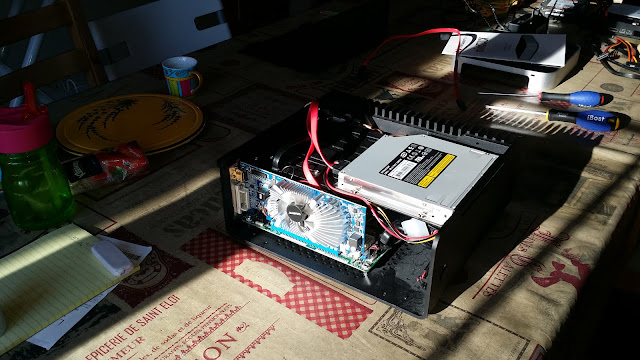




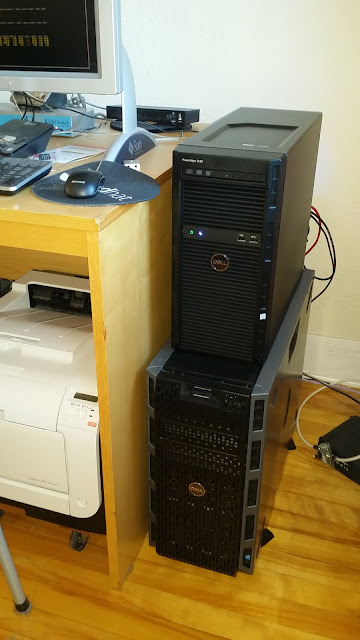
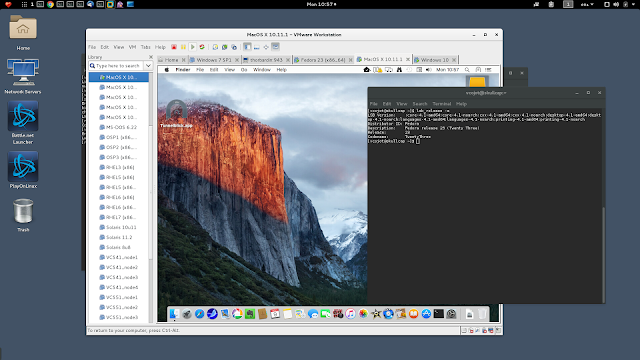
Comments
Post a Comment